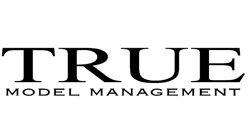Zara 2.0
Zara 2.0
by David Birnbaum
Our industry is in a state of continual change. The successful companies are those on the cutting edge of change. To put it another way, the traditional companies — those who have immunized themselves against the need to change — find themselves inevitably going out of business.
A generation ago, Liz Claiborne was the world’s largest women’s clothing brand importer with 1989 sales volume reaching $2.2 billion. Liz captured the needs of the time by providing quality clothing at reasonable prices for the new class of professional woman. In 1988, just ten years after the company was founded, Liz Claiborne joined the Fortune list of the world’s 500 top industrial companies. Liz Claiborne was considered to be one of the industry’s true immortals because the company was the great innovator of its day:
- The first to move away from a traveling sales force
- The first to introduce test orders
- The first to move from a three-season annual calendar to providing consumers with new styles every two months
- The first to utilize multi-media advertising
Three years from now, this once immortal company may well disappear, broken up and sold piecemeal. Liz will be remembered by the quality of its sourcing system and its executives who now can be found running sourcing at such diverse companies as Avon Products, Ann Taylor and Ralph Lauren. Most importantly, Liz Claiborne will be remembered for its commitment to social responsibility and its many charitable efforts.
Today Zara is at the top of the leaders’ board. With annual sales in excess of $16 billion, Zara is the world’s largest clothing retailer, the great innovator of the moment:
- The first to provide the latest fashion items at reasonable prices
- The first to operate true speed-to-market
- The first to make full use of test orders
- The first to move to three-dimensional globalization
It is this last change — three-dimensional globalization — which may prove to be Zara’s most important innovation, but which, paradoxically, may also be the greatest challenge facing the company.
We garmentos like to tell the world that we are the first truly globalized industry. Yet, for the most part, we deal only in one dimension: vendor globalization. Our factories are certainly located all over the world, but there is more to globalization than importing men’s shirts from Bangladesh.
Some companies operate in a second dimension: consumer globalization. These are the companies that sell their products all over the world; very often their home market has become a secondary market. These include the great designer labels such as Ralph Lauren, Giorgio Armani, Prada and Zegna.
However, while these companies often both produce and market all over the world, their design remains strictly home market. Every consumer from New York to Shanghai knows that Ralph Lauren is American, just as they know that Armani, Prada and Zegna are all Italian.
What makes Zara, and a select few others special, is that they deal in a three-dimensional global environment: They produce all over the world — vendor globalization. They market all over the world — consumer globalization. They have no local or regional design identity — design globalization. Few consumers know or care that Zara is a Spanish company. If you ask the average American customer, they will tell you H&M is American, Guess? is European and Mango comes from some totally unknown location.
Crisis in the 21st Century Garment Industry |
As Zara moves from increasingly regional to global, the great Zara model faces increasing problems. Zara’s greatest advantage lies in its ability to provide the most interesting cutting-edge items, risk free. Normally the more cutting edge the design, the great the risk. The Zara model obviates the risk because it includes two vital facilities:
Test orders: to ensure that the styles will indeed sell before the company commits to large stock quantities
Speed-to-market: to ensure that the large stock orders are delivered to the stores while the item is still the most interesting and cutting edge.
As long as Zara remained a European regional retailer, these two facilities operated almost perfectly. That may well be attributable to two special circumstances inherent in the regional market which could possibly fail when transposed to a global market:
The European market is relatively homogeneous. Styles which test well in Barcelona, London and Paris would more than likely sell equally well in Milan, Berlin and Lisbon.
With fast-turn factories located in Europe and North Africa, which supply Zara are only a few days away from the distribution centers and the distribution centers are but a few days from the stores.
The move from regional retailer to global retailer may have fundamentally changed the rules of the game. If this indeed proves to be true, assumptions which had previously been thought to be correct are at the very least now open to question.
Assumption 1 Universal Design: styles designed in Barcelona, will sell in Milwaukee, Xian and Mumbai.
Assumption 2 Universal Test Orders: styles that tested best in Europe will be the styles best suited for sale in Asia and North America.
Assumption 3 Universal Speed-to-Market: goods produced at fast-turn factories located in Europe and North Africa will arrive in the U.S., China, or India while the item is still most interesting and cutting-edge.
Faced by this dilemma, Zara has two choices:
I. The Traditional Decision: Assume that the old model will meet the challenges of the new circumstances and do nothing.
II. The cutting-edge decision: Accept that the old Zara 1.0 model is now flawed and create the new Zara 2.0 model.
These are the choices facing senior management at Zara’s parent company Inditex. The good news is that these are some of the smartest and most innovative people ever to come out of our industry. Almost single-handedly Inditex has defined 21st century garment retailing.
While we wait to see what Zara’s executives will choose, two things are certain:
In our industry, no company is above change.
Our industry has remarkably few traditional companies – those who believe change is not necessary - for good reason.
From The Birnbaum Report/Strategic Sourcing for Garment Importers.







































